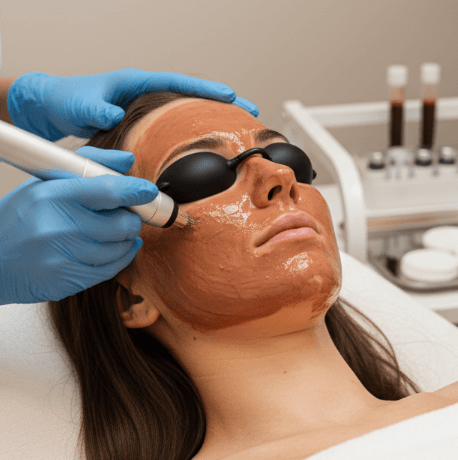Boost Your Health with Traditional Korean Nutrition While Visiting Korea
The K-Style Diet is celebrated worldwide for its balance, flavor, and powerful health benefits. At the heart of this diet are nutrient-dense Korean superfoods that have been staples in Korean cuisine for centuries. As an international patient exploring nutrition coaching in Korea, incorporating these superfoods into your K-Style Diet plan can enhance your wellness journey, support recovery, and promote long-term health.
Here’s a guide to essential Korean superfoods you should include in your personalized diet plan.
1. Kimchi – The Fermented Powerhouse
- What It Is: A traditional fermented vegetable dish, usually made with napa cabbage and Korean radishes, seasoned with garlic, chili peppers, and fish sauce.
- Health Benefits: Rich in probiotics, kimchi supports gut health, boosts immunity, and has anti-inflammatory properties. It also aids digestion and may help regulate weight.
- How to Include: Enjoy kimchi as a side dish with every meal or incorporate it into soups and stews.
2. Seaweed (Gim and Miyeok)
- What It Is: Edible seaweed varieties such as dried laver (gim) and wakame (miyeok) are common in Korean cooking.
- Health Benefits: High in iodine, vitamins A, C, E, K, and minerals like calcium and magnesium, seaweed supports thyroid function, bone health, and skin vitality.
- How to Include: Use dried gim as a snack or wrap, and add miyeok to soups and salads.
3. Doenjang – Fermented Soybean Paste
- What It Is: A staple fermented soybean paste used in soups and sauces.
- Health Benefits: Rich in probiotics and antioxidants, doenjang improves digestion, helps detoxify the body, and may have anti-cancer effects.
- How to Include: Use doenjang as a base for soups (doenjang jjigae) or as a seasoning in vegetable dishes.
4. Perilla Leaves (Kkaennip)
- What It Is: Aromatic leaves used fresh or pickled in Korean cuisine.
- Health Benefits: Loaded with omega-3 fatty acids, vitamins, and antioxidants, perilla leaves support heart health and reduce inflammation.
- How to Include: Wrap grilled meats or rice with perilla leaves or add to salads and stews.
5. Korean Red Ginseng (Insam)
- What It Is: A prized root herb used traditionally for its medicinal properties.
- Health Benefits: Enhances energy, immune function, mental clarity, and reduces fatigue. It also has adaptogenic properties to help the body manage stress.
- How to Include: Consume as tea, extract, or supplements recommended by your nutrition coach.
6. Barley (Bori) and Brown Rice
- What It Is: Whole grains frequently consumed as staples in Korean meals.
- Health Benefits: High in fiber, vitamins, and minerals, these grains improve digestion, regulate blood sugar, and promote sustained energy release.
- How to Include: Substitute white rice with mixed grains (bap), including barley and brown rice, for better nutrition.
7. Garlic and Ginger
- What They Are: Essential flavor bases in Korean cooking with medicinal qualities.
- Health Benefits: Both have antimicrobial, anti-inflammatory, and antioxidant effects, supporting cardiovascular health and immune defense.
- How to Include: Used fresh or pickled in various dishes, broths, and sauces.
8. Green Tea (Nokcha)
- What It Is: A traditional antioxidant-rich beverage.
- Health Benefits: Contains catechins that boost metabolism, improve brain function, and offer anti-cancer benefits.
- How to Include: Drink freshly brewed green tea daily or as advised by your nutrition coach.
9. Mung Beans (Nokdu)
- What They Are: Versatile legumes used in pancakes, porridge, and soups.
- Health Benefits: High in protein, fiber, and antioxidants, mung beans support blood sugar regulation and cardiovascular health.
- How to Include: Enjoy mung bean pancakes (bindaetteok) or add them to soups and stews.
10. Sweet Potatoes (Goguma)
- What They Are: Commonly consumed root vegetables rich in nutrients.
- Health Benefits: Packed with fiber, vitamins A and C, and antioxidants, sweet potatoes aid digestion, skin health, and immune function.
- How to Include: Serve roasted, steamed, or incorporated into porridges and side dishes.
Tips for Integrating Korean Superfoods into Your Diet
- Work with Your Korean Nutrition Coach: They can tailor portion sizes and combinations based on your health goals and any medical conditions.
- Start Slowly: Introduce fermented foods like kimchi gradually to allow your digestive system to adjust.
- Balance Flavors and Textures: Korean meals often emphasize harmony; combine superfoods with fresh vegetables, lean proteins, and whole grains.
- Learn Traditional Recipes: Embrace cooking classes or online tutorials recommended by your nutrition coach to enjoy authentic flavors.
- Stay Hydrated: Pair your meals with healthy Korean teas to enhance digestion and nutrient absorption.
Conclusion
Incorporating Korean superfoods into your K-Style Diet plan as an international patient offers a powerful, natural way to enhance your health while enjoying delicious, culturally rich meals. These nutrient-packed ingredients support digestion, immunity, recovery, and overall wellness—making them essential components of any personalized Korean nutrition program.
By working closely with a Korean nutrition coach, you can unlock the full potential of these superfoods tailored to your individual needs, ensuring a successful and sustainable wellness journey during and after your visit to Korea.




